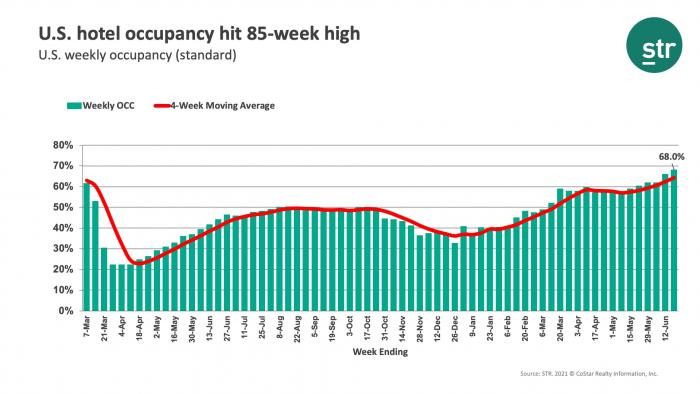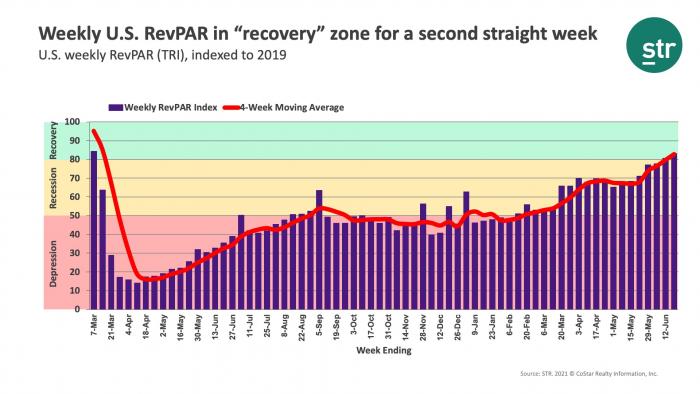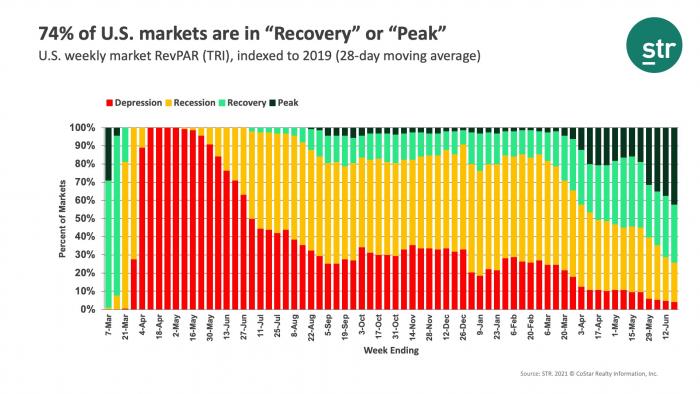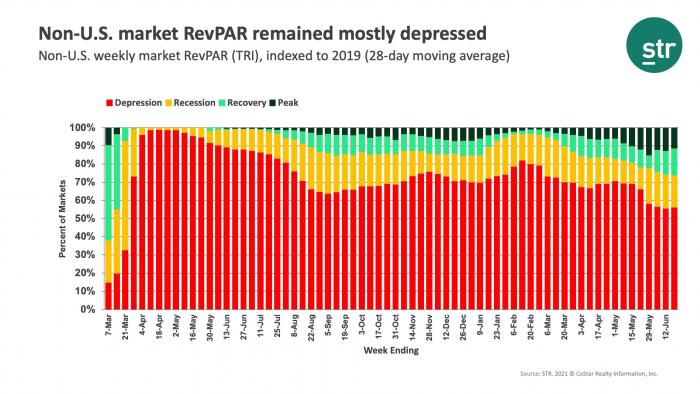Are you tracking the Market Recovery Monitor each week? Utilizing data and benchmarking to navigate recovery will be a key focus of the 2021 Hotel Data Conference. Click here for registration, with both in-person and virtual options available for our 13th annual event in Nashville.
Previous MRM versions: 5 June | 12 June
The “summer travel surge” continued this past week as U.S. hotel occupancy hit an 85-week high at 68.0% for the week ending 19 June 2021. That is the country’s highest level since the week ending 9 November 2019. The turnaround in occupancy is above expectations. Recall, at the start of the year, occupancy was 38% and has increased each month since. The increase first began with southern destinations, but this week, the states in the Pacific and Mountain regions saw the largest gains with California leading all states. On a total-room-inventory basis (TRI), which accounts for temporarily closed hotels, weekly occupancy was 65%, another pandemic-era high. Since the week ending 5 June, TRI occupancy has increased 5.6 points.



